#south america birds
Text
Зебровая циккаба— "готическая" неясыть из Южной Америки.
The Black-banded Owl is a "gothic" owl from South America.



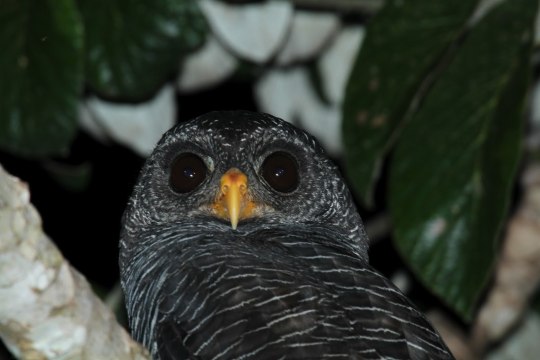

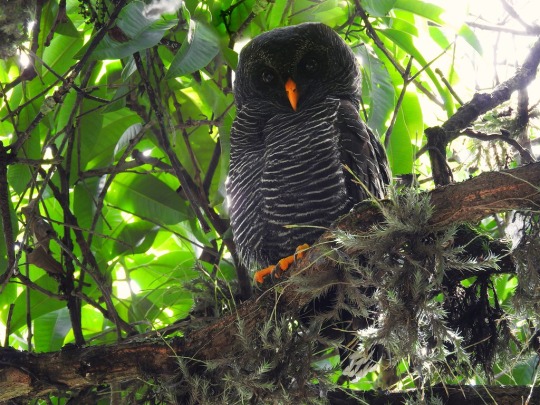


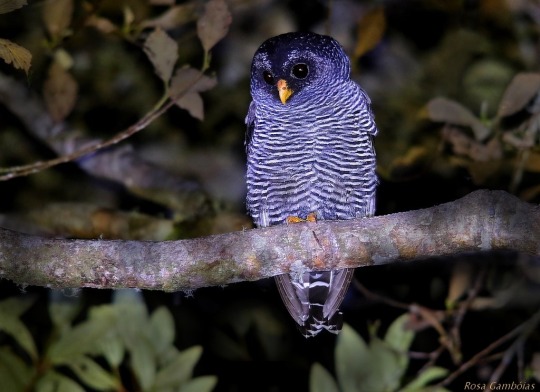

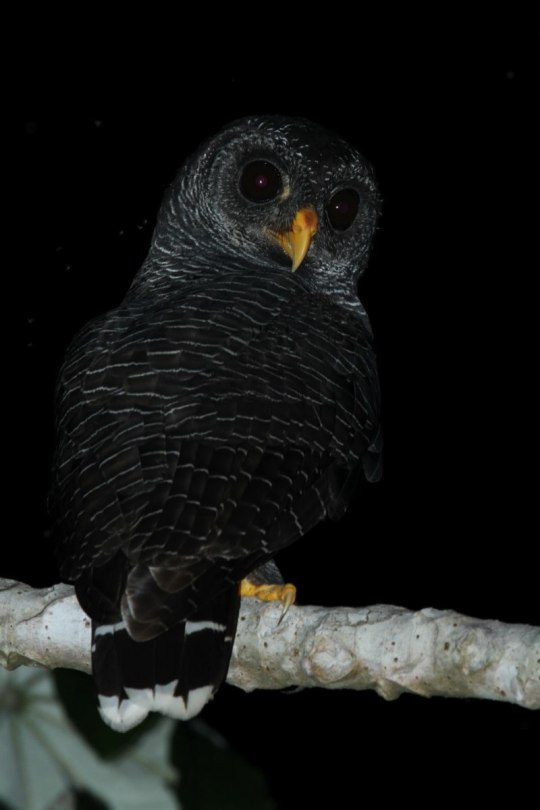


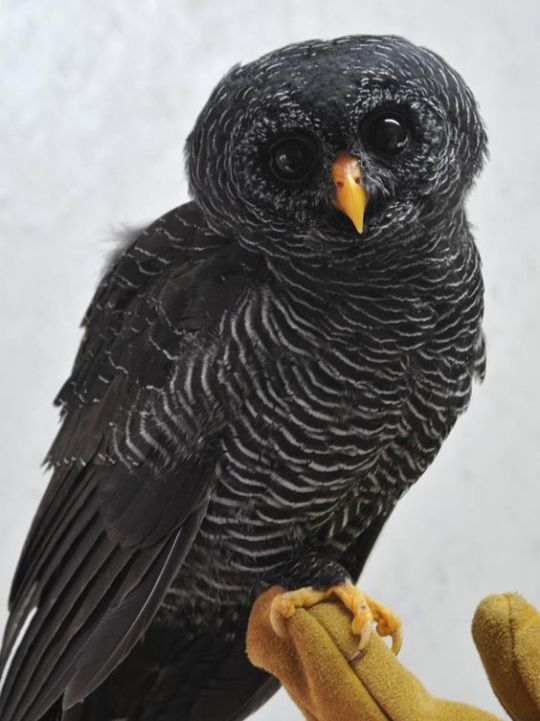

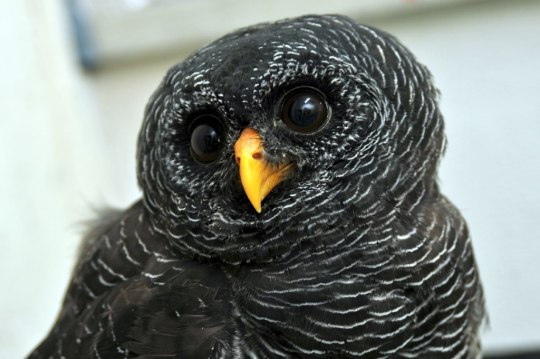


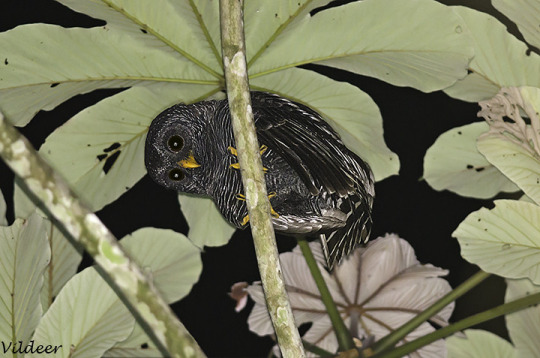
Зебровая циккаба (лат. Strix huhula) — представитель рода неясытей. Ареал ее обитания - обширные территории Парагвая, Бразилии, Боливии, южный частей Венесуэлы и Колумбии. Это сравнительно небольшие (30-36 см) ночные хищники, длина крыла 243-280 мм., а вес 397 г. Окрас циккабы : серая сова в чёрную полоску.
Зебровые циккабы населяют тропические и субтропические леса, банановые и кофейные плантации в востоку от Анд. Предпочитает низины, обычно не выше 500 метров над уровнем моря, но встречалась и в предгорьях Анд. Сова питается в основном насекомыми, особенно саранчой, богомолами и жуками. Также может употреблять мелких млекопитающих и других мелких позвоночных.
The Black-banded Owl (lat. Strix huhula) is a representative of the genus of tawny owls. Its habitat is the vast territories of Paraguay, Brazil, Bolivia, the southern parts of Venezuela and Colombia. These are relatively small (30-36 cm) nocturnal predators, wing length 243-280 mm, and weight 397 g. Strix huhula color: gray owl with black stripes.
Black-banded Owl inhabit tropical and subtropical forests, banana and coffee plantations east of the Andes. Prefers lowlands, usually no higher than 500 meters above sea level, but has also been found in the foothills of the Andes. The owl feeds mainly on insects, especially locusts, mantises and beetles. May also consume small mammals and other small vertebrates.
Источник:/www.wikidata.ru-ru.nina.az/Ciccaba_huhula.html, /ok.ru/nashiza/topic/70104275389416,//owls.ucoz.com/photo/zebrovaja_cikkaba/31,//vk.com/album-1610020_264462728.
#nature#nature aesthetic#south america birds#bird photography#owl#black-banded owl#black banded owl#strix huhula#Ciccaba huhula#night photos#природа#фотографии птиц#южноамериканские птицы#сова#Зебровая циккаба#природнаякрасота#ночные фото
113 notes
·
View notes
Text
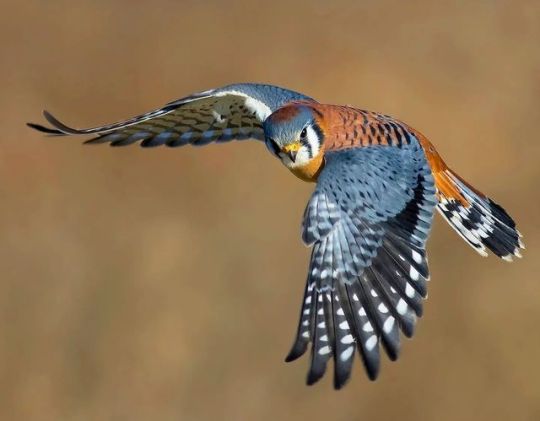
American Kestrel (Falco sparverius), male, family Falconidae, found over a great deal of North America and South America
https://instagram.com/david_hemmings_photo_tours
5K notes
·
View notes
Text
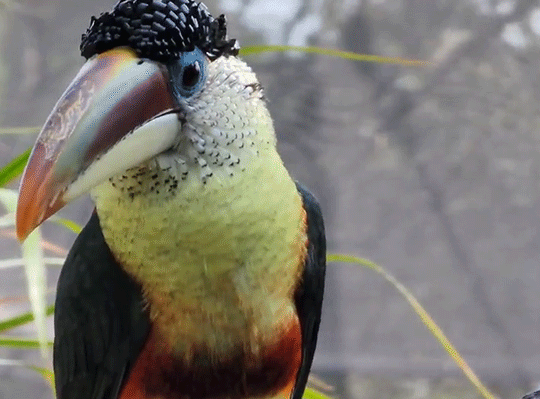


🪶🪮curl-crested aracari🪮🪶
2K notes
·
View notes
Text
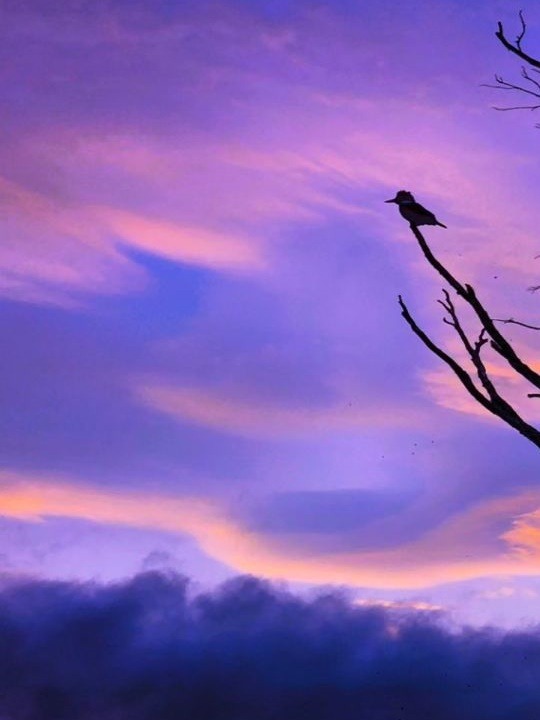

Purple hour
Bahia Mansa, Punta Arenas, Magallanes, Chile.
#photography#art#nature photography#landscape photography#photographers on tumblr#sunrise photography#autumn photography#birds photography#artists on tumblr#forest photography#clouds photography#travel photography#landscapes#adventure#patagonia#chile#birds#aesthetics#lensblr#purple skies#patagononia chilena#south america#purple#cloudscape#autumn#autumn colors
664 notes
·
View notes
Text

A flock of scarlet ibis (Eudocimus ruber) rest in a tree in Trinidad
by Laurence Green
#scarlet ibis#ibis#birds#eudocimus ruber#eudocimus#Threskiornithidae#pelecaniformes#aves#chordata#wildlife: trinidad#wildlife: south america
1K notes
·
View notes
Text
#poll#hyper specific poll#weirdly specific poll#bird#birds#hoatzin#polls#biology#animals#south america
1K notes
·
View notes
Text
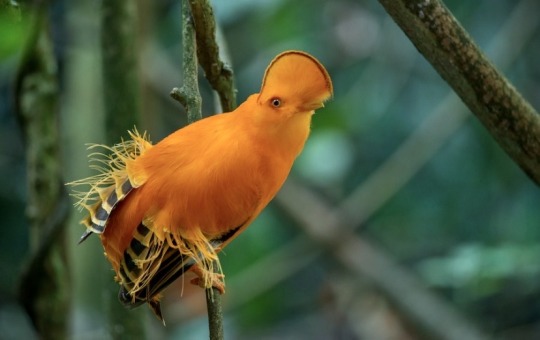


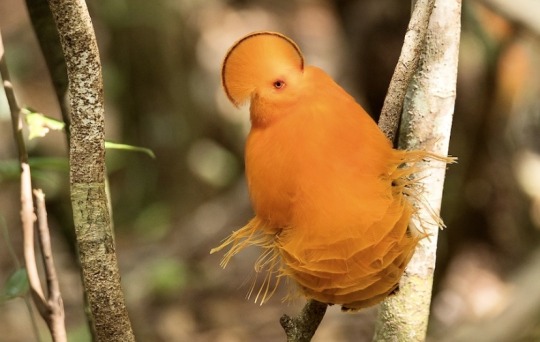


the guinean cock-of-the-rock is a colorful member of the cotinga family found in rainforest habitats of south america. they primarily feed on fruits such as papaya, but supplement their diet with small animals such as lizards and snakes. females are brown in coloration as opposed to the male’s bright orange, which helps disguise them in preferred nesting sites of rocky outcroppings. the guinean cock-of-the-rock is known for prevalent homosexuality in males, with up to 40% of males engaging in same-sex breeding behavior, and a smaller percentage never taking a female mate.
5K notes
·
View notes
Text
Rufiphonia Vázquez-López & Hernández-Baños, 2024 (new genus)

(A male individual of Rufiphonia rufiventris, photographed by Hector Bottai, under CC BY-SA 4.0)
Meaning of name: Not explained by authors, but presumably Rufiphonia = rufous [in Latin] Euphonia [genus of finches including the white-vented euphonia]
Species included: R. rufiventris (rufous-bellied euphonia, type species, previously in Euphonia), R. anneae (tawny-capped euphonia, previously in Euphonia), R. cayennensis (golden-sided euphonia, previously in Euphonia), R. fulvicrissa (fulvous-vented euphonia, previously in Euphonia), R. gouldi (olive-backed euphonia, previously in Euphonia), R. imitans (spot-crowned euphonia, previously in Euphonia), R. mesochrysa (bronze-green euphonia, previously in Euphonia), R. pectoralis (chestnut-bellied euphonia, previously in Euphonia), and R. xanthogaster (orange-bellied euphonia, previously in Euphonia)
Age: Holocene (Meghalayan), extant
Where found: Humid forests in Central and South America
Notes: Rufiphonia is a genus of euphonias, a group of finches from the tropical Americas in which the males tend to be brightly colored. Unlike most other finches, euphonias feed primarily on fruits instead of seeds, and accordingly they generally have less robust beaks than typical finches.
Currently, only two euphonia genera are recognized, Chlorophonia and Euphonia, each containing a large number of species. However, a new study on the evolutionary history of this group suggests splitting Chlorophonia into two distinct genera and Euphonia into three based on their phylogenetic relationships and anatomical differences. For species traditionally classified in Euphonia, the authors propose limiting Euphonia proper to a group of closely related euphonias in which males tend to have a dark blue throat and yellow belly, resurrecting the old name Phonasca for a second group in which males tend to have a yellow throat, and coining the new name Rufiphonia for a third in which both males and females can have rufous patches on the belly, head, or underside of the tail.
Reference: Vázquez-López, M., S.M. Ramírez-Barrera, A.K. Terrones-Ramírez, S.M. Robles-Bello, A. Nieto-Montes de Oca, K. Ruegg, and B.E. Hernández-Baños. 2024. Biogeographic factors contributing to the diversification of Euphoniinae (Aves, Passeriformes, Fringillidae): a phylogenetic and ancestral areas analysis. ZooKeys 1188: 169–195. doi: 10.3897/zookeys.1188.107047
178 notes
·
View notes
Text
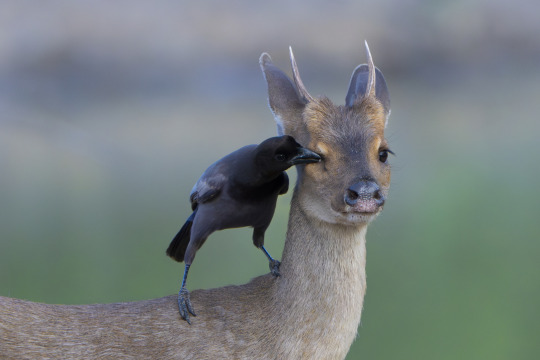
Common brown brocket Subulo gouazoubira
With purplish jay Cyanocorax cyanomelas
Observed by thekarp, CC BY-NC
#Subulo gouazoubira#common brown brocket#Cervidae#deer#non-ungulate#bird#passerine#Cyanocorax cyanomelas#purplish jay#South America#Brazil#Mato Grosso
55 notes
·
View notes
Text
FINAL POLL: HIPSTER BIRD BRACKET



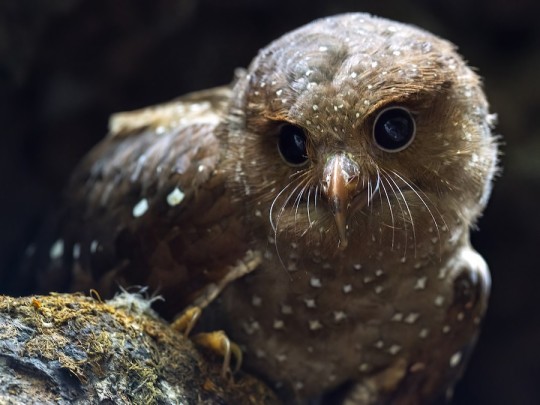
Tidbits of info, if you need help deciding:
Groove-billed Ani has flown in on the power of friendship and communal child-rearing- as well as the power of being "just a little guy". They're clumsy and floppy and cute and they do raise kids in a big communal family, which is wild for cuckoos to do.
Sickle-winged Nightjar have made it this far I think based solely on the fact they are nightjar that are just a little weird in the wings department. Nothing else about them is extra weird or strange, and they're not well studied.
Purple Honeycreeper defeated the Pink Robin, a bird which I thought was unstoppable, by a best 2-of-3 run-off poll. The male is pictured here, but the female is also quite colorful and could have been the contributing factor in the win.
Oilbird has risen on its popularity of being an absolute nut of a bird: it lives in caves and echolocates, it eats fruit but finds them mostly by vision, it is the only living member of its family and order, the babies are so fat they can be used to make lanterns-- it's a lot.
Image Sources: Ani (Cameron Carver); Nightjar (Kristof Zyskowski); Honeycreeper (Mike Hudson); Oilbird (Andres Vasquez Noboa)
#hipster bird main bracket#animal poll#bird poll#FINAL POLL#oilbird#purple honeycreeper#sickle winged nightjar#groove billed ani#south american birds. all of them#GBAN gets into north america but still
93 notes
·
View notes
Photo
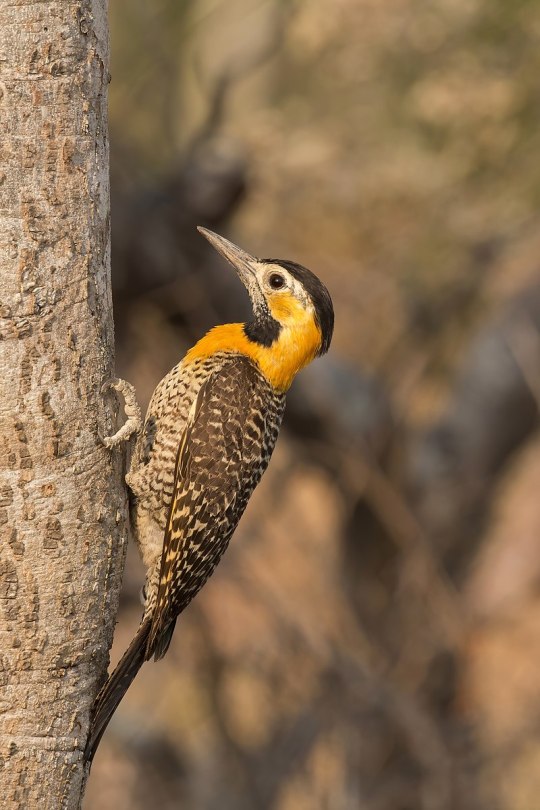
Campo flicker (Colaptes campestris) female, the Pantanal, Brazil
photograph by Charles J Sharp | Wikipedia CC
485 notes
·
View notes
Photo



168 New Geoglyphs Discovered in Peru !
Archaeologists discovered 168 geoglyphs near the arid Nazca plain in Southern Peru. The new findings, which encompass images of humans, birds, snakes, cats, and killer whales, date between 100 BCE and 300 CE, when the pre-Incan Nazca civilization lived in the region. The discovery adds to nearly 1,000 straight lines and hundreds of figurative drawings that have so far been identified as part of the vast Nazca lines.
The Nazca people created the works by removing the earth’s top layer of black stone to reveal the white sand below, and although the exact function of the lines is unknown, they are thought to have served a ritualistic purpose in relation to astrology.
Professor Masato Sakai of Yamagata Unviversity in Japan and Peruvian archaeologist Jorge Olano led the recent survey The team used aerial photographs, some captured by drones, to decipher the figures. Most of the newly discovered figures are relatively small — less than 32 feet wide — and many were drawn on hillsides.
Yamagata University began surveying the Nazca lines in 2004. The university last announced new findings in 2019, and so far, Yamagata University has identified a total of 358 previously unknown geoglyphs.
The 290-square-mile protected region that contains most of the Nazca lines is a UNESCO World Heritage Site. Most of the works remain in good condition, although the 1937 construction of the Pan-American highway cut through some, and the ancient lines have sustained isolated damage in the past decade. In 2014, Greenpeace activists staged a protest that damaged the geoglyphs, and in 2018, a truck driver drove through the area and cut through three of the drawings. Sakai warned that mining initiatives could threaten the Nazca lines, and the university stated that it plans to use artificial intelligence to establish the lines’ distribution patterns, which will be used to further conservation efforts.
Words by Elaine Velie / Courtesy of Hyperallergic
#art#design#history#style#nazca#nazca lines#south america#birds#animals#geoglyphs#unesco#peru#snakes#whale#human#elaine velie#hyperallergic
245 notes
·
View notes
Text
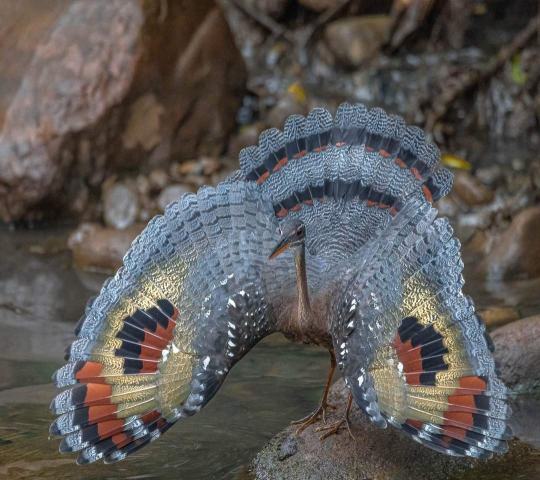
Sunbittern (Eurypyga helias), family Eurypygidae, order Eurypygiformes, found in Central and South America
This bird is the only member of its family. Its closest living relative is the Kagu of New Caldeonia.
Photograph by Luis Ricardo Rojas
#sunbittern#eurypyga#wading bird#eurpygidae#eurypygiformes#bird#ornithology#central america#south america#nature#animals
3K notes
·
View notes
Text
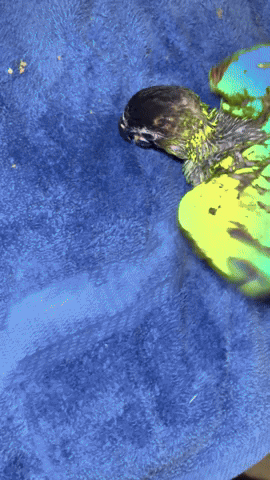
nanday conure
#aesthetic#animals#discovery#nandayconure#conures#vaporwave#trippy#birds#visually pleasing#south america#parrots#parakeets#wildlife#glitch
30 notes
·
View notes
Text


Gaviota Cahuil
Piedras Negras, Lago Rupanco, Los Lagos, Chile.
#photography#art#nature photography#photographers on tumblr#landscape photography#birds photography#artists on tumblr#travel photography#animals photography#summer photography#landscapes#adventure#los lagos#chile#aesthetics#nature#lensblr#birds#south america#earth
212 notes
·
View notes
Text

Guira cuckoos (Guira guira) in Brazil's Pantanal
by Gregory "Slobirdr" Smith
#guira cuckoo#cuckoos#birds#guira guira#guira#cuculidae#cuculiformes#aves#chordata#wildlife: brazil#wildlife: south america
289 notes
·
View notes